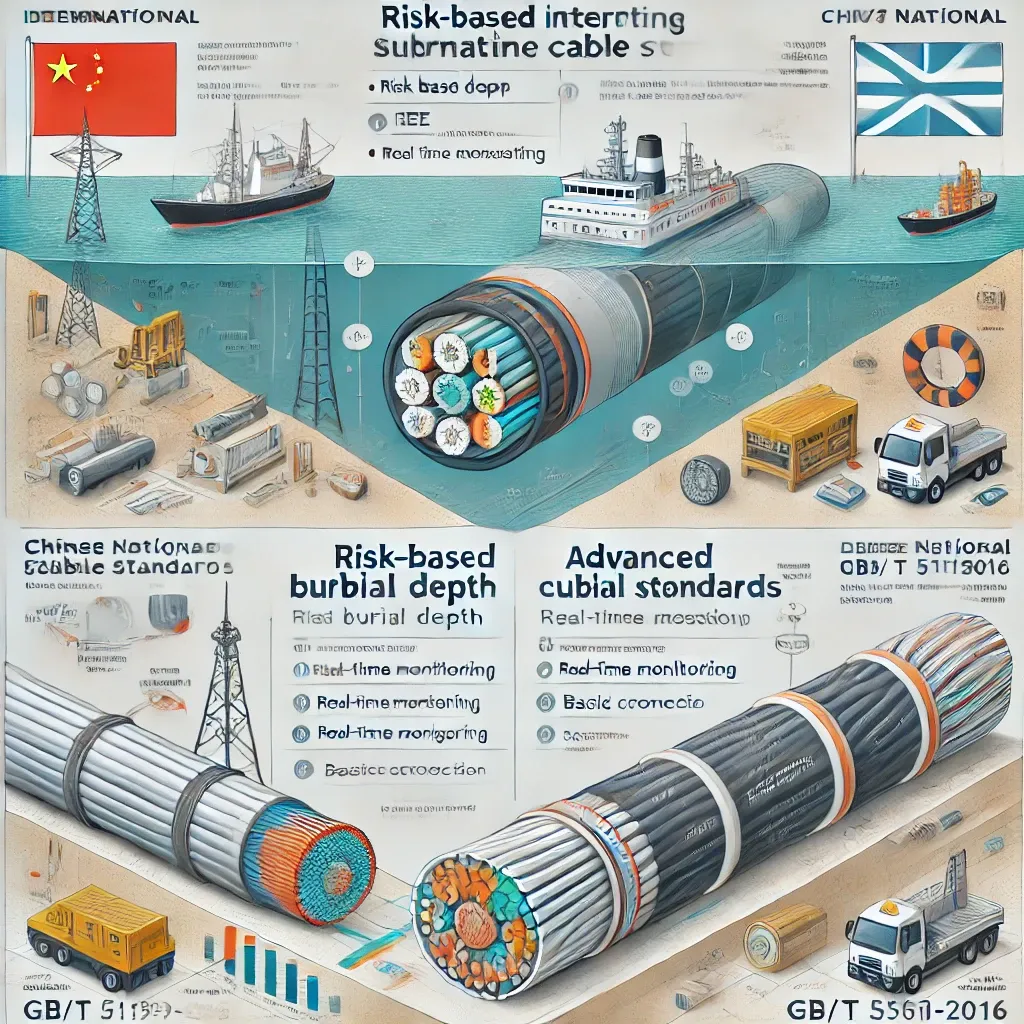Comparison of Domestic and International Submarine Cable Construction Standards
Time: 2025-03-18 13:40:05
Source: Henan Province Jianyun Cable Co., Ltd.

Introduction
Submarine power cables are essential for offshore wind farms, cross-sea power transmission, and communication networks. Due to the complex marine environment, the installation, protection, and maintenance of submarine cables require strict technical standards. This study compares domestic and international submarine cable construction standards, identifying key differences and challenges while proposing recommendations for improvement.
1. Overview of Submarine Cable Construction Standards
1.1 International Standards
The main international submarine cable standards include:
-
IEEE Std 1120-2004 – Covers planning, design, installation, and repair of submarine power cables.
-
DNVGL-RP-0360-2016 – Provides guidelines for shallow-water subsea power cables.
-
DNVGL-ST-0359-2016 – Focuses on submarine power cables in offshore wind farms.
1.2 Chinese National Standards
The main Chinese standards include:
-
GB/T 51191-2016 – Construction and acceptance specifications for submarine power transmission.
-
GB/T 17502-2009 – Guidelines for submarine cable routing surveys.
-
T/CSEE 0118-2019 – Technical guidelines for long-length submarine cable construction.
2. Comparison of Key Construction Requirements
2.1 Cable Laying Process
|
Standard
|
Routing Survey
|
Installation Conditions
|
Monitoring Requirements
|
|
IEEE 1120-2004
|
General guidelines
|
Specifies installation factors
|
No real-time monitoring details
|
|
DNVGL-RP-0360-2016
|
Detailed survey requirements
|
Weather and load considerations
|
Recommends real-time monitoring
|
|
GB/T 17502-2009
|
Comprehensive survey requirements
|
Basic installation factors
|
No real-time monitoring details
|
Observation: International standards emphasize risk assessment, while Chinese standards focus on predefined technical requirements.
2.2 Cable Protection Methods
|
Standard
|
Burial Depth
|
Scour Protection
|
Crossing Guidelines
|
|
IEEE 1120-2004
|
No specific depth
|
General scour prevention
|
No detailed crossing methods
|
|
DNVGL-RP-0360-2016
|
Risk-based burial depth
|
Comprehensive scour protection strategies
|
Specifies crossing impact assessments
|
|
GB/T 51191-2016
|
Defines burial depth range
|
Basic scour protection
|
No crossing guidelines
|
Observation: Chinese standards lack detailed crossing protection, while international standards integrate environmental risk analysis.
3. Key Challenges and Suggested Improvements
3.1 Adoption of Risk-Based Construction Guidelines
-
Chinese standards use fixed technical parameters, while international standards apply risk-based assessment to determine burial depth, protection levels, and crossing requirements.
Recommendation: Integrate risk assessment models into national standards.
3.2 Need for Standardized Cable Crossing Procedures
-
Current Chinese standards lack detailed requirements for cable crossings, increasing potential risks.
Recommendation: Define minimum separation distances, protection layers, and routing approval processes.
3.3 Enhancement of Real-Time Monitoring Requirements
-
DNV standards recommend real-time monitoring of cable tension, depth, and alignment, while Chinese standards do not specify real-time monitoring.
Recommendation: Mandate real-time monitoring systems for submarine cable installation projects.
4. Conclusion
-
Chinese standards focus on predefined technical parameters, while international standards emphasize risk-based flexibility.
-
International standards provide detailed guidance on crossing protection, which is missing in Chinese regulations.
-
Real-time monitoring systems should be integrated into Chinese standards to improve construction accuracy and safety.
5. Keywords
-
Submarine Power Cable Standards
-
Cable Installation Guidelines
-
Risk-Based Construction Methods
-
Submarine Cable Protection
-
International vs. Domestic Standards
6. References
-
Cheng Ting et al. (2024). Comparative Analysis of Domestic and Foreign Submarine Cable Construction Standards. Wire & Cable, No.5, 2024. DOI: 10.16105/j.dxdl.1672-6901.202405001
-
IEEE Std 1120-2004 – Guide for the Planning, Design, Installation, and Repair of Submarine Power Cable Systems.
-
DNVGL-RP-0360-2016 – Recommended Practice for Subsea Power Cables in Shallow Water.
